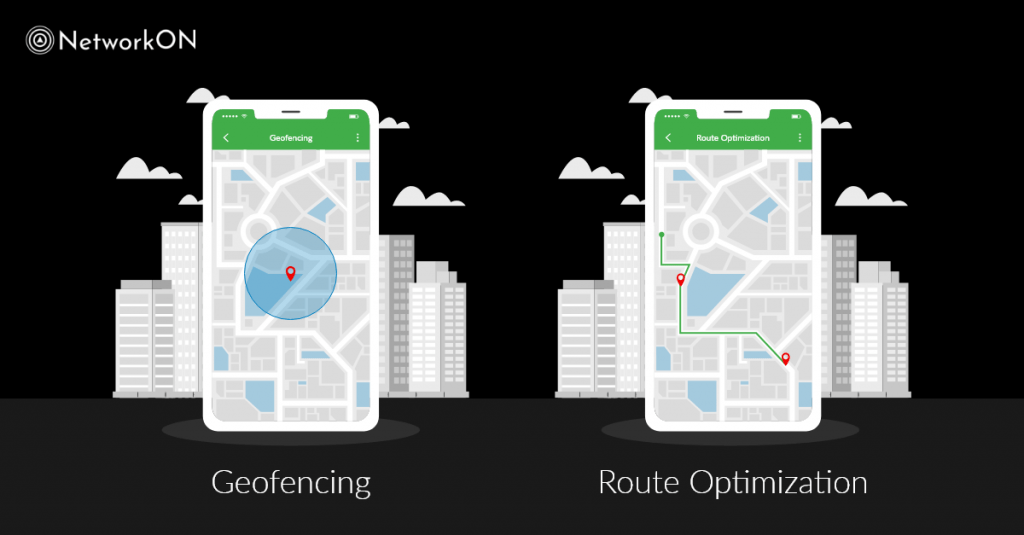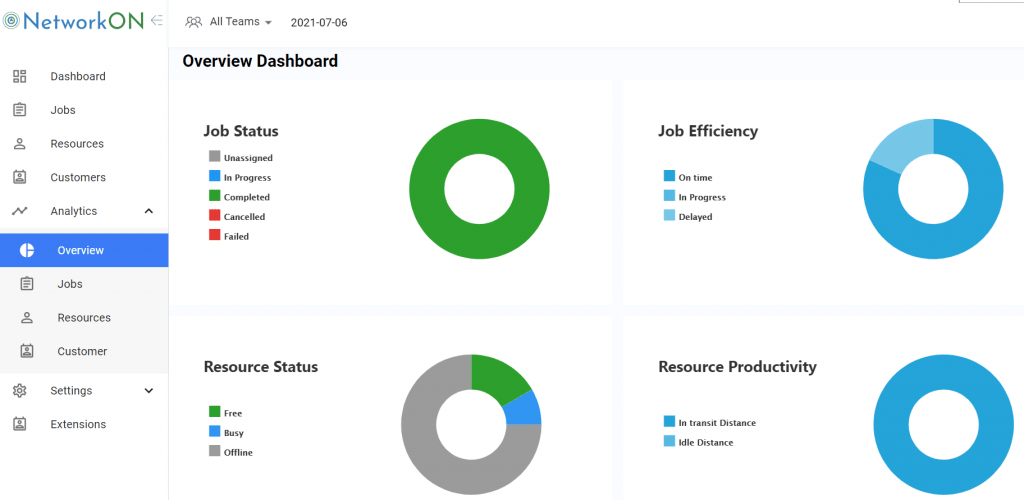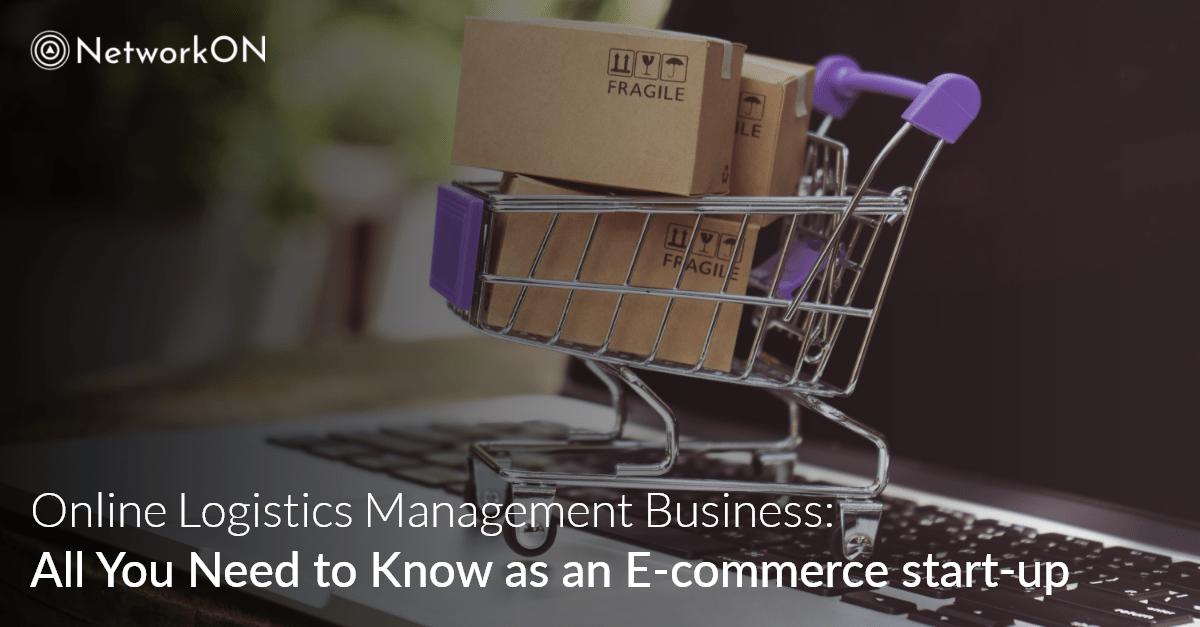Table of Contents
A wise man once said, “Better learn how to manage your inventory before it manages you”. This saying is especially true for an e-commerce company, where your inventory represents your investment.
Likewise, it is fundamental to streamline your inventory management with efficient online logistics management operations irrespective of the phase of the business you’re in. And it makes perfect sense to partner with third-party logistics management companies to improve your focus solely on your business services.
Before we understand what e-commerce logistics management is all about, let’s first discuss how it defines the success of your business.
How E-commerce Logistics Define Business Success
With the start of the 48-hour delivery policy by Amazon, other e-commerce companies like Walmart and Target were forced to play along similar lines. This started a culture among the e-commerce companies to deliver products quickly or risk losing out on customers.
The incorporation of technologies like artificial intelligence, machine learning, and data mining, has pushed the boundaries of e-commerce logistics helping organizations enhance order fulfillment and improve their credibility.
And with effectively managed e-commerce logistics, you can also improve customer journey with an aim to sustain and scale order fulfillment.
In-house vs Third-Party Logistics Partners
Established e-commerce giants like Amazon, Walmart, and Home Dept have opted for in-house e-commerce logistics departments because these companies have already established their dominance in the market, and now, they only focus on scaling their operations.
In comparison, start-ups and most SMEs opt for third-party logistics partners (3PLs) as handling substantial costs on extra equipment, labor, utility bills, and maintaining distribution centers can be difficult for such organizations. With a 3PL, you can minimize operational costs but also give away significant control.
While there are pros and cons for each, you must consider the following questions to decide what works best for your business.
- Can my team manage logistics internally?
- Do I have the required expertise to meet customer demands?
- Is the product packaging process simple or complicated for my team?
For startups, it’s better to automate the entire process or use an advanced warehouse management system to minimize human inefficiencies and increase resource utilization.
Top Must-have Features of Online Logistics Management and Tracking Software
The supply chains have become more resilient, efficient, and competitive with the availability of logistics technologies. With dedicated logistics tracking software, you get features like automatic scheduling, geofencing, real-time tracking, and other AI-powered solutions that streamline warehousing, analytics, and last-mile delivery.
Let’s take a closer look at some of the top features you must have in your logistics management and tracking software.
1. Fleet management
Fleet management is an indispensable part of the logistics industry. It allows companies to manage and coordinate delivery vehicles to achieve higher levels of efficiency and reduce operational costs.
Managers can use the feature to schedule deliveries based on priority levels. By determining the exact location of a vehicle, delivery to the nearest point can be made by communication with the delivery agent.
Fleet management also prevents unnecessary idling, unauthorized use of vehicles, poor time management, and inefficiency in handling deliveries. And with the ability to manage all your vehicles using a single platform, you can also provide seamless roadside assistance in case of emergencies.
2. Integration with Existing Logistics Software
Integration with your existing logistics software is essential for streamlining your work and saving you a lot of time in the longer run.
It also cuts down the requirement to re-key information between systems and makes the data available in a common format that improves collaboration and makes it easily accessible in real-time through a single dashboard.
3. Route Optimization and Geofencing
Route optimization helps automate the workflow of transportation, logistics, and delivery departments in your organization. It helps in bridging the data about your vehicle’s current location and scheduled activities to create an optimized vehicle routing path.
By adjusting the route to include minimum delays, you can lower operational costs and higher customer satisfaction.

With geofencing, you can get information about vehicles entering or exiting a specific geographic area. Your fleet managers will get a notification whenever a drier ignores working hours or breaks any geofencing rules—allowing you to control driver behavior to improve resource utilization.
4. Delivery Agent App
To increase productivity and customer satisfaction, a delivery agent app provides optimized routes and real-time customer information including, delivery notifications, proof of delivery, and live chat options.
The NetworkON Resource app provides additional productivity features for onboard agents such as real-time earnings, navigation, and more.
5. Analytics Dashboard
The analytics dashboard allows you to monitor KPIs such as incoming orders, agent performance, delivery turnaround time, revenue, customer satisfaction, transportation costs, and more. It helps you
to increase operational efficiency and manage orders, fleet, and customers through a centralized interface in real-time.

6. Forecasting
Predictive data analytics is an important feature to get a deep insight into procurement cycles, manufacturing, average resource utilization, logistics cost, quality control, and time delays. It allows an organization to build effective operational strategies, increase resource utilization, and build better products.
Over the last few years, predictive data analytics has been used to generate demand forecasts based on previous shopping trends, order history, and buying behavior. This has enabled e-commerce companies to deliver a better shopping experience to their customers.
Taking E-commerce Logistics Management to the Next Level
For any e-commerce startup, effectively coordinated logistics can bring a major difference to the success of your brand. To help you through, discover the things you should know when planning the future of your e-commerce brand.
Demand Planning
Retail owners use historical data to forecast how much inventory they need. However, as a start-up, you may not have this luxury.
So how will you figure out how much inventory you require?
Here are a few methods to help you build your sales history.
- Monitor website traffic and social media response. If your social media efforts start to pay off, you will get a quick spike in demand.
- Observe seasonal trends and holiday-driven purchases. For instance, if spring comes early, outdoor apparel could see unanticipated demand.
- You can also stock up your inventory to support your promotional efforts such as discount codes, free shipping thresholds, and other offers.
Visibility
As your e-commerce logistics capabilities increase, it becomes more complicated to manage inventory and anticipate the demand-supply changes.
It especially happens with e-commerce companies that experience rapid growth, who increase logistics capability in an ad hoc manner to deal with the surge in orders. This results in such companies using several warehouses, drop shippers, and other logistics methods.
However, the backdrop of such tactics is a lack of communication, which makes the organization incapable of getting a complete picture of their inventory and sales.
And when you don’t have a clear picture of your inventory stocks, it becomes difficult to reflect that in quantity counts on your internal systems as well as on your website.
Customers check the availability of an item before making a purchase. It’s recommended to keep enough stock in hand but not have excess inventory tying up your resources. By using an effective online logistics management system, you can develop the systems and maintain the operational discipline to make things work for you.
Managing Exchanges and Returns
Managing returns and exchanges can be one of the most challenging aspects for e-commerce companies. According to Transport Topics, for a brick-and-mortar store, the average return rate is just 8 or 9 percent, while for e-commerce it can reach 34 to 36 percent.
To handle returns effectively, an e-commerce company must consider a return as a reverse purchase, so that the same level of care and oversight can be maintained as that of the original purchase.
With flexible return policies, incentive buyers can make purchases with confidence, helping you to build credibility. However, your enterprise must have a clear understanding of the implications involved in the form of costs and logistics challenges.
The best way forward is to keep returns separate from the supply chain of new products. By keeping separate locations or creating a separate section within your warehouse, you can manage reverse logistics easily.
The NetworkON Experience
NetworkON provides a state-of-the-art on-demand platform that helps streamline the process of setting up third-party warehouses across countries. As e-commerce companies are increasingly shifting towards building an omnichannel presence, the future lies in the integration of newer technologies in the supply chain system.
With the right partner like NetworkON, you get all the required elements of online logistics management at your fingertips enabling efficient resource utilization and competitive advantage.
Connect now to discover more about our logistics management platform at info@networkon.io or visit our website.
Frequently Asked Questions
Q1: What is e-commerce logistics management, and why is it important?
E-commerce logistics management oversees the entire order fulfillment process, from warehousing to delivery. It includes managing inventory, optimizing routes, and coordinating with third-party logistics providers. Effective e-commerce logistics management is crucial because it directly impacts delivery speed, customer satisfaction, and operational efficiency. With advancements in technology, such as AI and machine learning, companies can enhance order fulfillment and improve their credibility, leading to better business outcomes.
Q2: Should my e-commerce business handle logistics in-house or partner with a third-party logistics provider (3PL)?
The decision depends on your business size and resources. Established giants like Amazon and Walmart manage logistics in-house to maintain control and scale operations efficiently. On the other hand, startups and SMEs often benefit from partnering with 3PLs to reduce operational costs associated with equipment, labor, and distribution centers. Evaluating factors like your team’s capability, expertise, and the complexity of product packaging will help determine the best approach for your business.
Q3: What are the must-have features of online logistics management and tracking software?
Key features to look for in logistics management and tracking software include:
Fleet Management: For coordinating delivery vehicles, scheduling, and reducing operational costs.
Integration with Existing Software: To streamline processes and enhance data accessibility.
Route Optimization and Geofencing: To improve delivery efficiency and monitor vehicle behavior.
Delivery Agent App: This app is for real-time updates, optimized routes, and customer communication.
Analytics Dashboard: To track performance metrics and operational efficiency.
Forecasting: For predicting demand and optimizing resource utilization based on data analytics.
Q4: How can NetworkON enhance my e-commerce logistics operations?
NetworkON offers a cutting-edge on-demand platform that facilitates the setup of third-party warehouses across various countries. This integration supports the creation of an omnichannel presence and leverages advanced technologies for efficient resource utilization. By partnering with NetworkON, you can access comprehensive logistics management features that streamline operations, reduce costs, and provide a competitive edge in the e-commerce sector.





Hairstyles VIP
Wow! This could be one particular of the most beneficial blogs We've ever arrive across on this subject. Actually Wonderful. I'm also a specialist in this topic so I can understand your effort.